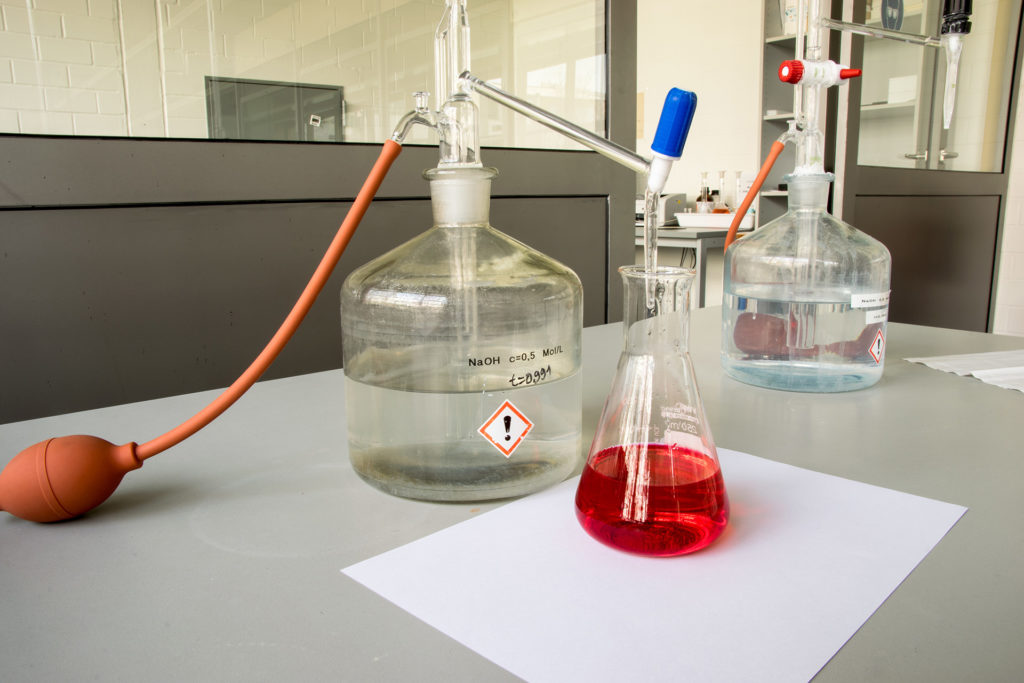Photovolt Instruments is well known for their Aquatest 2010 moisture analyzer; a system designed for the use of the Karl Fisher methodology for chemical analysis. The technology behind Photovolt’s equipment has been around for a long time. Originally designed by Mitsubishi, Photovolt purchased the rights from Mitsubishi over 30 years ago. Photovolt’s Senior Technical Consultant – Robert Pranis, PhD. provides unique insight on how exactly this piece of scientific equipment is currently being used in business around the world.

“For those using the Aquatest 2010 or lighter version 1010 the concern is moisture and we’re talking very small amounts – particles per million. Electrical companies, pharmaceuticals, plastic manufactures, and any machinery using hydraulic fluid; such as airplanes, tanks or construction equipment. Our instruments are used in situations where they need to be; rugged, easy to use and totally reliable.”
Heavy-duty equipment is often the focal point for needing to measure even the smallest traces of water concentration. Even the smallest trace of water molecules that are not supposed to be present can corrode and rust expensive pieces of equipment.
Selling Equipment That Lasts
What really sets Photovolt apart is their customer service. They have a specific focus on Karl Fischer titration and can fix anything. Photovolt is known to actually fix other people’s moisture analyzers as well as their own – some of which are really, really old. They are always more than happy to fix a customer’s equipment when often other companies will just say ‘it’s time to buy the new model’. As a smaller company, they can provide a level of service that truthfully larger companies simply cannot provide. And when you’re a small company yourself and you need some help – it’s nice to know you have the support of the Photovolt team.”
For New Customers in Need of a Moisture Analyzer
Photovolt Instruments emphasizes the importance that their equipment is rugged and easy to use. Surprisingly their customers are often not scientists but rather equipment managers, factory managers, and military personnel – and for that reason, Photovolt has gone to great lengths to ensure their products are easy to use.
Having their client’s best interests in mind Photovolt also designed a lighter version of the Aquatest 2010 called the Aquatest 1010. The 1010 unit provides a lower-priced version that has the same sensitivity and can measure the same parts per million (PPM) of water. Often noted that lap space is a premium, the 100 unit is also much smaller. The main difference between the Aquatest 2010 and the 1010 is that the 2010 can also measure any moisture present in solid materials, such as a hard plastic, while the 1010 is limited to only liquid and gas materials.
“Typically, you’d take a sample whether its mineral oil or a powder – and drop it into the vessel or inject and have it titrate the amount of water in the sample. But there are somethings that are a plastic or solid – they are something that won’t dissolve or are too big to fit in the vessel so that’s where the 2010 comes into play. The 2010 is an option but really only a very small amount of our customers need the full use of the 2010 – thus we designed the Aquatest 1010.”
Common questions a potential customer would often ask?
We offer two different types of glassware – greaseless or non-greaseless. The 2010 has round glass joins, which typically you’d need to use grease to seal it – to avoid having moisture leak in or seal the glassware together to the point where it would break. The generators are $2,000 pieces of equipment and so knowing that 1010 is all greaseless glassware – it has a Teflon feel on it so you don’t have to worry about it getting frozen or getting stuck together. So we offer both grease and greaseless.
How low can it go? So there are companies that claim incredibly low sensitivities – and truthfully a lot of those are bogus claims. It’s not because the instruments cannot do it – but it’s running the analysis you can’t get the moisture low enough to the point where you can eliminate background noise so to speak to get accurate results. So our instruments get just as good of a reading – others may claim to get lower testing but the accuracy is really actually the same.
Cost – we tend to be lower in price than most other manufactures – especially the 1010. Diaphramless generator. Uses cylinder on the outside as your anode and a single layer in the middle as your cathode and basically you generate iodine on the outside and because there is a single wire in the middle it mixes before it can get reabsorbed before it can get. Benefit – easier to cleanout. We have an electric company that uses that down to 22 or so PPM and they continuously use it and have good results. So people often ask about it – and we strongly encourage people to switch over to it.